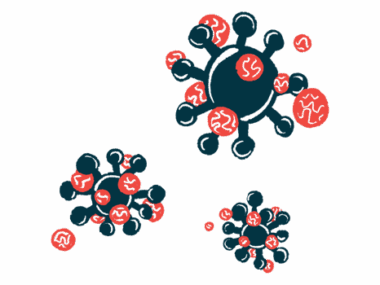ACER3 enzyme may be therapeutic target in cholestasis: Lab study
Blocking it helped reduce signs of liver disease in mice, human liver cells
Written by |

ACER3, an enzyme involved in the metabolism of fat-like signaling molecules known as ceramides, plays a detrimental role in cholestasis-related liver damage — and, as such, may represent a new therapeutic target, according to a laboratory study using mice and human cells.
Elevated ACER3 levels were found in the liver tissue of people with cholestasis, with higher levels of the enzyme associated with more severe liver damage, per the study. Blocking ACER3 increased levels of a ceramide called CER(d18:1/18:1), which attenuated signs of cholestasis-driven liver disease in the mouse model and in lab-grown human liver cells.
“Our work lays the groundwork for future therapeutic interventions targeting ACER3 or supplementing CER(d18:1/18:1) to treat cholestatic liver diseases,” the scientists wrote.
The findings from the study, titled “Targeting the ceramidase ACER3 attenuates cholestasis in mice by mitigating bile acid overload via unsaturated ceramide-mediated LXRβ signaling transduction,” were published in Nature Communications.
Patients with liver disease found to have higher ACER3 levels
In people with cholestasis, the flow of bile — a key digestive fluid — from the liver to the small intestine is impaired. Cholestasis can be obstructive or metabolic. Obstructive cholestasis is caused by blockages in the bile ducts, which are the tubes that transport bile, while the metabolic type is caused by a disruption of bile formation.
Impaired bile flow leads to the toxic accumulation of bile in the liver, damaging the organ. It also can trigger the leakage of bile acids, the main component of bile, into the bloodstream. Such leakage can lead to a range of symptoms.
Ceramides are a class of fat-like molecules found in high concentrations within the cell membrane. They’re known to regulate several processes associated with cholestasis-induced liver damage, such as cell death, inflammation, and scar formation, which is known medically as fibrosis.
Emerging evidence suggests that the dysregulation of ceramide metabolism plays a role in cholestasis. For example, elevated blood levels of certain ceramides have been linked to the severity of cholestasis in pregnant women. High ceramide levels have also been found in the liver of a mouse model of cholestasis.
“While ceramide metabolism has garnered increasing interest in liver research, the role of ceramides in CLI [cholestatic liver injury] remains unclear,” the researchers wrote.
Now, scientists in the U.S. and China collaborated to investigate the role of ACER3 in cholestasis. The enzyme, involved in ceramide metabolism, has been implicated in liver disease.
When the researchers compared liver tissues from people with and without cholestatic liver injury, those with liver disease had higher ACER3 levels, which were significantly associated with higher levels of several liver damage markers.
At the same time, lower levels of the ceramide CER(d18:1/18:1), a molecule used by ACER3, correlated with more severe disease in people with cholestatic liver injury.
Findings suggest enzyme may be therapeutic target in humans
In line with the patient results, the activity of the Acer3 gene, which codes for ACER3, was increased in liver cells of a mouse model of cholestatic liver injury, which was induced by tying off some bile ducts.
Deleting the Acer3 gene in female mice with cholestasis reduced signs and markers of liver injury, inflammation, and fibrosis, according to the study. These benefits, however, were not seen in male mice, which developed more severe liver disease than their female counterparts, according to the researchers.
Further experiments showed that Acer3 loss in female mice with cholestasis boosted the levels of CER(d18:1/18:1), which directly activated a receptor protein called LXR-beta. This, in turn, stimulated the production of SULT2A1, an enzyme that mitigated the toxic effects of bile overload, normalizing bile metabolism.
In line with these findings, treating cholestatic female mice with CER(d18:1/18:1) significantly attenuated the signs of liver injury, revealing a protective role of this ceramide in cholestasis, the team noted.
Because these effects were only seen in female mice, researchers examined whether these differences would exist in humans. Findings showed no major sex-based differences in cholestasis-driven dysregulation of ACER3 and SULT2A1 or ceramide levels in human tissues.
[These findings offer] mechanistic insights and [suggest] therapeutic potential for targeting ACER3 … for [cholestatic liver injury].
Lastly, suppressing the gene’s activity in lab-grown human liver cells with bile overload prevented cell death by significantly increasing CER(d18:1/18:1) levels. Like in mice, this activated LXR-beta and boosted SULT2A1, suggesting that the results in mice may translate to humans.
“These findings unravel the function of [CER(d18:1/18:1)-LXR-beta] signaling in maintaining [bile acid] and lipid metabolic resilience to counter [bile acid] overload in [liver cells], serving as a promising therapeutic target of CLI,” the scientists wrote, adding that the work “[offers] mechanistic insights and [suggests] therapeutic potential for targeting ACER3 and ceramide(d18:1/18:1) for CLI.”








